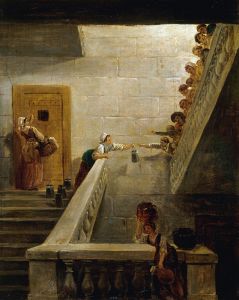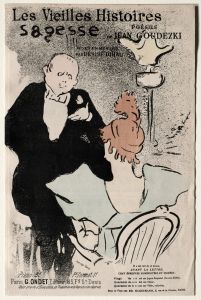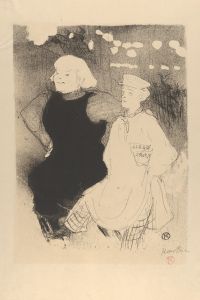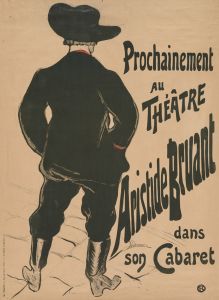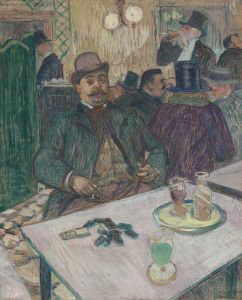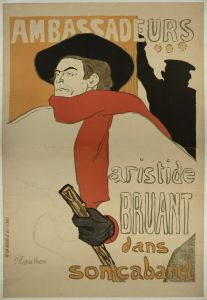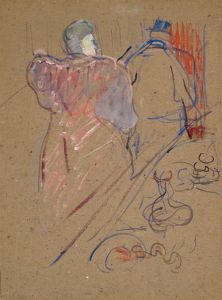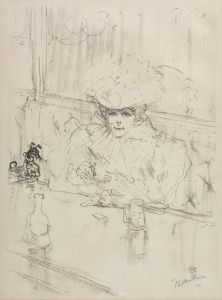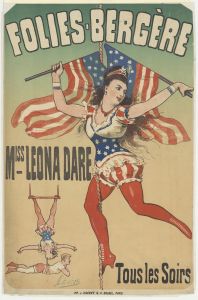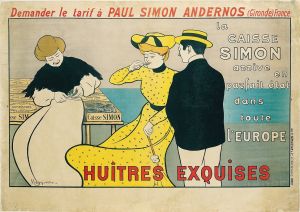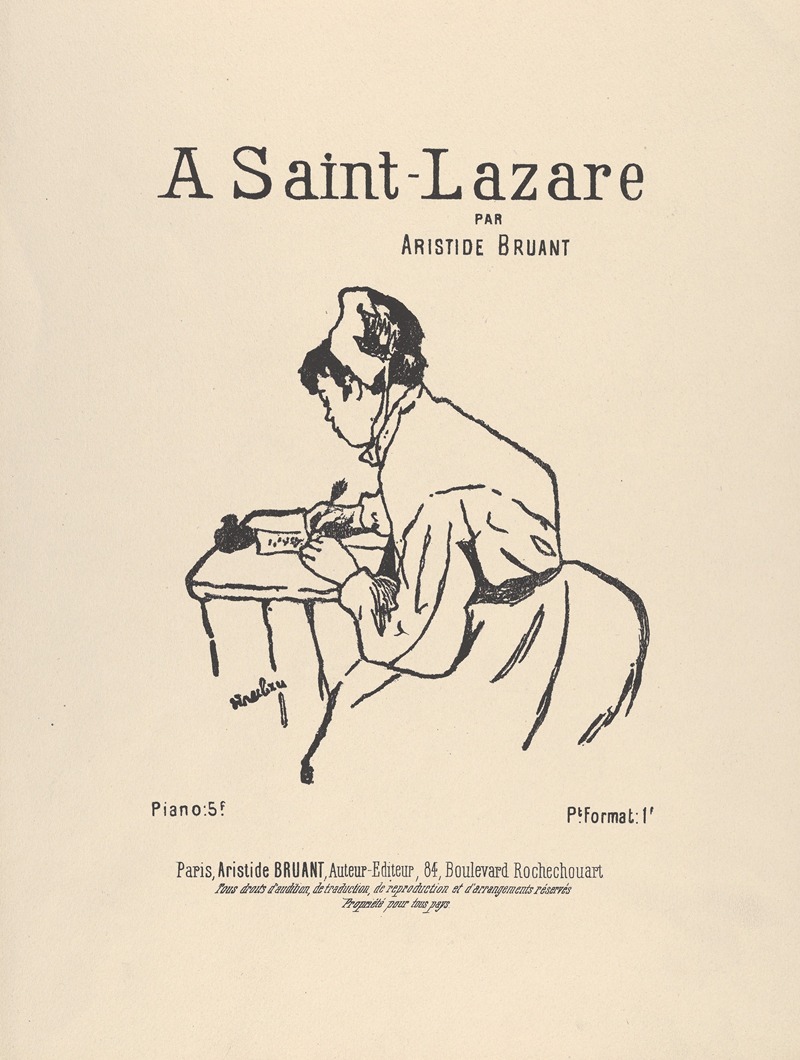
A Saint-Lazare par Aristide Bruant
A hand-painted replica of Henri de Toulouse-Lautrec’s masterpiece A Saint-Lazare par Aristide Bruant, meticulously crafted by professional artists to capture the true essence of the original. Each piece is created with museum-quality canvas and rare mineral pigments, carefully painted by experienced artists with delicate brushstrokes and rich, layered colors to perfectly recreate the texture of the original artwork. Unlike machine-printed reproductions, this hand-painted version brings the painting to life, infused with the artist’s emotions and skill in every stroke. Whether for personal collection or home decoration, it instantly elevates the artistic atmosphere of any space.
Henri de Toulouse-Lautrec's painting A Saint-Lazare par Aristide Bruant is a work that reflects the artist's deep connection to the bohemian culture of late 19th-century Paris. Toulouse-Lautrec, a prominent Post-Impressionist painter, is widely recognized for his depictions of Parisian nightlife, particularly the cabarets, theaters, and performers of Montmartre. This painting is closely tied to the figure of Aristide Bruant, a celebrated singer, songwriter, and cabaret owner of the time.
Aristide Bruant was a central figure in the Parisian entertainment scene and a personal acquaintance of Toulouse-Lautrec. Known for his bold personality and distinctive style, Bruant often performed songs that highlighted the struggles of the working class and the underprivileged. He was also the proprietor of the cabaret Le Mirliton, where he frequently performed. Toulouse-Lautrec created several works featuring Bruant, including posters and paintings, which contributed to Bruant's enduring image as a cultural icon.
The title A Saint-Lazare par Aristide Bruant references one of Bruant's songs or performances, likely associated with the Saint-Lazare district of Paris. This area was known for its bustling train station and working-class population, themes that resonated with Bruant's artistic focus. Toulouse-Lautrec's portrayal of Bruant often emphasized his commanding presence, typically dressed in his signature wide-brimmed hat, red scarf, and black cape.
While specific details about the painting's composition and current location are not widely documented, it is consistent with Toulouse-Lautrec's broader body of work, which often combined bold colors, striking outlines, and a focus on character and atmosphere. His art was heavily influenced by Japanese ukiyo-e prints, which is evident in his use of flattened perspectives and strong graphic elements.
Toulouse-Lautrec's collaboration with figures like Aristide Bruant underscores his role as a chronicler of Parisian life during the Belle Époque. His works not only captured the vibrancy of the city's entertainment world but also provided a window into the personalities that defined it. Through his art, Toulouse-Lautrec immortalized figures like Bruant, ensuring their legacy within the cultural history of France.
Further information about A Saint-Lazare par Aristide Bruant specifically is limited, and its significance is often discussed within the broader context of Toulouse-Lautrec's artistic contributions and his relationship with Aristide Bruant.





